Welcome to the enigmatic world of Anubis, the ancient Egyptian god who has captured the imagination of scholars, artists, and enthusiasts for centuries. With his striking jackal-headed appearance and his association with death and the afterlife, Anubis remains one of the most intriguing and mysterious deities in Egyptian mythology. In this article, we will delve into the origins of Anubis, explore his enigmatic attributes, uncover the myths and legends surrounding him, examine his role in ancient Egyptian worship, and even trace his influence in modern culture. Get ready to embark on a journey of exploration as we unlock the secrets of Anubis, the guardian of the dead.
Contents
- The Origins of Anubis
- The Enigmatic Attributes of Anubis
- The Worship of Anubis
- Myths and Legends Surrounding Anubis
- Anubis in Modern Culture
- Decoding the Symbolism of Anubis
- Anubis: Mystery and Intrigue
- Conclusion
-
Frequently Asked Questions
- What is the significance of Anubis in ancient Egyptian mythology?
- Why is Anubis often depicted with the head of a jackal?
- What were the main rituals associated with Anubis?
- Did Anubis have any connections to other Egyptian deities?
- Were there any temples dedicated to Anubis?
- What is the relationship between Anubis and the weighing of the heart ceremony?
- What are some modern cultural references to Anubis?
- What is the symbolic meaning behind the jackal-headed form of Anubis?
- Why is Anubis considered an enigmatic god?
- How does Anubis continue to fascinate people today?
- References
-
Frequently Asked Questions
- 1. How did Anubis become associated with death and the afterlife?
- 2. What is the significance of Anubis’ jackal-headed appearance?
- 3. How did Anubis become associated with embalming and mummification?
- 4. Were there any temples dedicated to Anubis?
- 5. Can Anubis be considered a guide and protector?
- 6. Did Anubis have any siblings or family members?
- 7. How did Anubis become associated with the weighing of the heart ceremony?
- 8. How has Anubis influenced modern culture?
- 9. Was Anubis worshipped by people outside of Egypt?
- 10. Why is Anubis still a subject of fascination today?
- References
- Read More
The Origins of Anubis
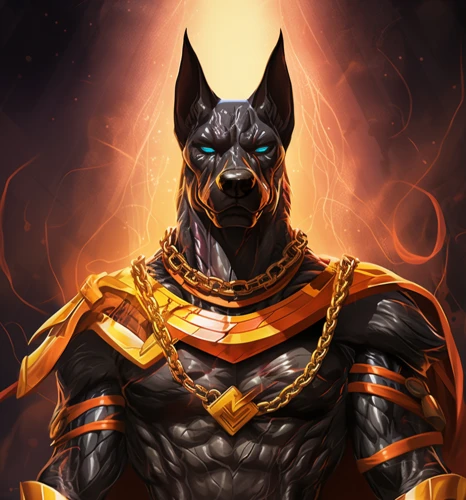
Anubis, the enigmatic god of ancient Egypt, has a fascinating origin steeped in mythology. According to ancient Egyptian belief, Anubis was believed to be the son of Nephthys, the goddess of mourning, and Osiris, the god of the afterlife. This divine lineage explains Anubis’ significant role in the realm of death and the underworld. However, there is also a variant of the myth that suggests Anubis was the son of Ra, the sun god, and his sister, Nephthys. Regardless of his parentage, it is clear that Anubis holds a unique position among the pantheon of gods in ancient Egypt. His association with death, mummification, and embalming made him a crucial figure in guiding souls to the afterlife and protecting them on their journey. It is believed that Anubis’ prominence began during the First Intermediate Period (2181–2055 BCE) and continued throughout dynastic Egypt. His role as the guardian of the dead solidified his position as a significant deity in Egyptian culture. The iconography of Anubis often depicts him as a man with the head of a jackal, symbolizing his connection to the ancient Egyptian funerary practices. This distinct appearance further distinguishes Anubis from other gods in the pantheon and adds to the mystique surrounding his origins.
The Role of Anubis in Ancient Egypt
In ancient Egypt, Anubis played a crucial role in the belief system and religious practices of the civilization. As the god of embalming, mummification, and the afterlife, Anubis held the responsibility of ensuring a smooth transition for the souls of the deceased into the realm of the dead. He guided and protected the souls during their journey, guarding them against evil forces and acting as a mediator between the mortal world and the divine realm. Anubis was closely associated with the weighing of the heart ceremony, where he determined the fate of the soul in the afterlife based on the balance of their heart against the feather of Ma’at, the symbol of truth and justice. This role made Anubis a central figure in the funeral rituals and burial practices of ancient Egypt, highlighting his significance in the belief system and the assurance of a favorable outcome in the journey beyond death.
The Iconography of Anubis
The iconography of Anubis plays a crucial role in understanding his symbolism and significance in ancient Egyptian culture. Anubis is most commonly depicted as a man with the head of a jackal, a creature associated with death and the afterlife. This unique representation emphasizes his role as the guardian of the dead. The jackal head symbolizes Anubis’ ability to navigate between the realms of the living and the dead, acting as a guide for souls on their journey to the afterlife. The black color often associated with jackals further underscores the connection to death and the underworld. In some artistic depictions, Anubis is shown holding various funerary items such as a flail or an ankh, further solidifying his association with the burial rites and the process of mummification. It is important to note that the iconography of Anubis evolved over time, reflecting the changing beliefs and practices of ancient Egyptian society. He was often depicted in funerary art, on the walls of tombs and temples, as well as on canopic jars that held the organs of the deceased. These representations allowed individuals to visually connect with Anubis and seek his protection and guidance in the afterlife. The enduring image of Anubis as the jackal-headed deity continues to captivate and intrigue people to this day, making him one of the most recognizable figures from ancient Egyptian mythology.
The Enigmatic Attributes of Anubis
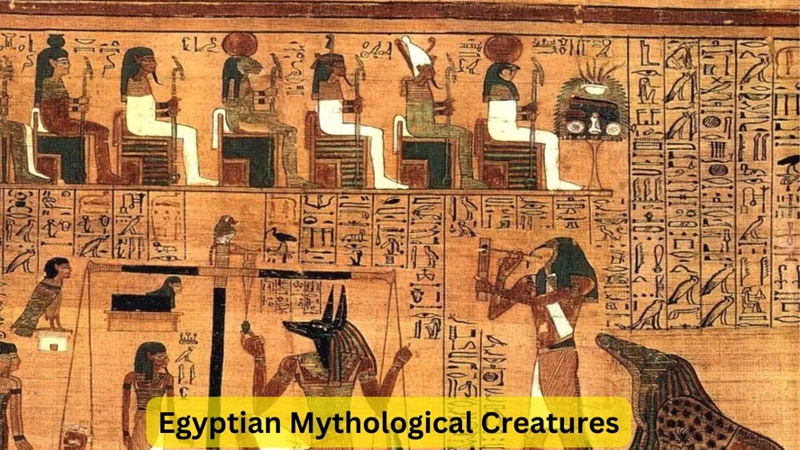
The enigmatic attributes of Anubis further deepen the intrigue surrounding this ancient Egyptian god. Anubis is primarily known as the guardian of the dead, responsible for guiding souls through the treacherous journey of the afterlife. His role as a psychopomp, a guide for the deceased, showcases his importance in the transition from the mortal world to the realm of the divine. One of the most significant rituals associated with Anubis is the Weighing of the Heart ceremony. During this ceremony, the heart of the deceased is weighed against the feather of Ma’at, the goddess of truth and justice. If the heart is lighter than the feather, it signifies a life well-lived, and the soul is granted entry into the afterlife. However, if the heart is heavier, it implies a life filled with wrongdoing, and the soul faces the devourer, Ammit, a fearsome creature who would consume the heart, leading to eternal oblivion. This ritual symbolizes the concept of judgment and the importance of leading a righteous life according to Ma’at’s principles. Anubis’ association with death and the afterlife also connects him to the phenomenon of rebirth and resurrection. The ancient Egyptians believed in the cyclical nature of life and death, with the ultimate goal being the attainment of immortality. As the protector and guide of the dead, Anubis plays a vital role in this journey of transformation and spiritual transcendence. The complexity and enigmatic nature of Anubis’ attributes continue to captivate scholars and enthusiasts alike, as they delve into the mysteries of ancient Egyptian religious beliefs and practices.
Anubis, the Guardian of the Dead
Anubis, the guardian of the dead, played a vital role in ancient Egyptian mythology and funerary practices. Revered for his ability to guide souls through the treacherous journey into the afterlife, Anubis was responsible for ensuring that the deceased would reach their final resting place safely. He was believed to oversee the mummification process, a crucial step in preserving the body for the afterlife. Anubis, with his keen sense of perception and unwavering loyalty, would weigh the deceased’s heart against the feather of Ma’at, the goddess of truth and justice, in the ceremony known as the Weighing of the Heart. If the heart was found to be pure and balanced, the soul would be granted eternal life. However, if the heart was heavy with wrongdoing, it would be devoured by the monstrous Ammit, resulting in the soul’s demise. Anubis’ role as the guardian of the dead highlights his significance in ensuring a smooth transition into the afterlife, embodying both the mercy and judgment associated with the ancient Egyptian beliefs surrounding death and rebirth. Through his watchful presence, he provided solace and protection to the departed, etching his place in the annals of Egyptian mythology.
The Weighing of the Heart Ceremony
The Weighing of the Heart Ceremony was a pivotal event in ancient Egyptian mythology and is closely associated with Anubis. According to the belief system of the ancient Egyptians, the afterlife was governed by Ma’at, the goddess of truth, justice, and cosmic order. In this ceremony, which took place during the judgment of the soul, the heart of the deceased was weighed against the feather of Ma’at. The heart was considered the seat of a person’s morality and actions in life. If the heart was found to be lighter than the feather, it meant that the person had led a virtuous life and would be granted eternal life in the afterlife. However, if the heart was heavier due to the burden of wrongdoing, it would be devoured by Ammit, a terrifying devourer of souls. Anubis played a crucial role in this ceremony as the guide and overseer. His presence ensured that the weighing process was carried out with fairness and accuracy. The depiction of Anubis with the head of a jackal in ancient Egyptian art serves as a reminder of his association with death and judgment. The Weighing of the Heart Ceremony illustrates the complex beliefs and rituals that ancient Egyptians held surrounding the afterlife and the role that Anubis played in guiding souls to their final judgment. It is a testament to the rich symbolism and intricate customs that defined this ancient civilization.
Connection to the Afterlife
Anubis, the god associated with death and the afterlife, had a profound connection to the realm beyond. In ancient Egyptian belief, Anubis played a crucial role in guiding souls through the treacherous journey from the earthly plane to the afterlife. It was believed that upon death, the soul would be escorted by Anubis to the Hall of Ma’at, where the Weighing of the Heart ceremony took place. In this ceremony, the deceased’s heart would be weighed against the Feather of Ma’at, symbolizing truth and justice. If the heart was found to be lighter than the feather, it meant that the person had led a virtuous life and would be granted eternal life in the afterworld. However, if the heart was heavier due to a life filled with wrongdoing, it would be devoured by Ammit, a fearsome creature that dwelled in the underworld. Anubis played a crucial role in determining the fate of the soul during this ceremony, ensuring that justice was upheld. This connection to the afterlife solidified Anubis’ position as a vital deity in Egyptian funerary practices and rituals. The belief in the afterlife and the importance placed on the proper guidance of souls is evident in the intricate and elaborate funeral rituals and tomb constructions of ancient Egypt. The presence of Anubis in these rituals and his association with death and rebirth reflected the deep-rooted belief in the continuation of life beyond the earthly realm. The ancient Egyptians firmly believed in the existence of an afterlife and viewed Anubis as the compassionate guardian who provided guidance and protection during the passage from one world to the next. His role in the connection between the earthly existence and the afterlife remains a fascinating aspect of ancient Egyptian culture and spirituality. (Source: /egyptian-hieroglyphs-ancient-civilization/)
The Worship of Anubis
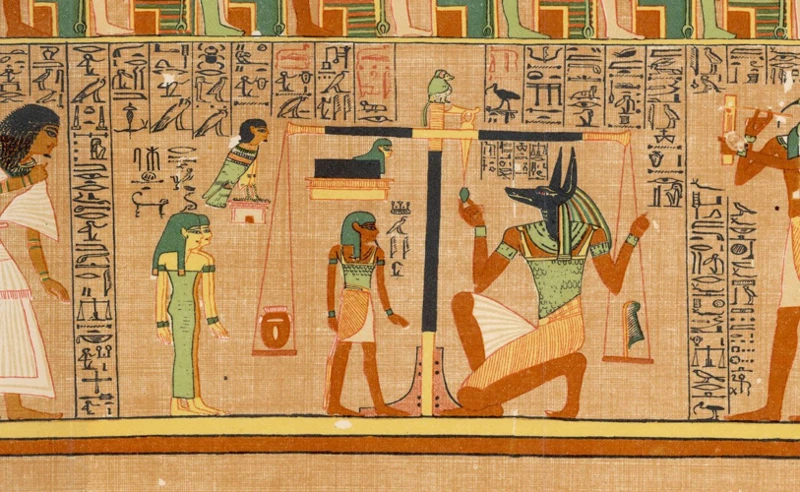
The worship of Anubis played a significant role in ancient Egyptian religion. As the guardian of the dead, Anubis held a crucial position in Egyptian funerary rituals and beliefs. To honor and appease this revered deity, ancient Egyptians built temples dedicated to Anubis where they performed various rituals and ceremonies. These temples served as sacred spaces where priests and devotees would make offerings, perform prayers, and conduct rituals associated with death and the afterlife. The rituals involved the careful mummification and embalming process, overseen by Anubis, to ensure the deceased would have a successful journey to the underworld. Additionally, Anubis was often invoked during the Weighing of the Heart ceremony, where a person’s heart would be weighed against the feather of Ma’at, the goddess of truth and justice, to determine their eligibility for the afterlife. In these ways, Anubis’s worship intertwined with the intricate belief system surrounding death and the afterlife in ancient Egypt, offering guidance, protection, and reassurance to both the living and the deceased. The enduring significance of Anubis in Egyptian mythology and religious practices showcases the profound impact of this enigmatic deity on ancient Egyptian culture.
Anubis in Ancient Egyptian Religion
In ancient Egyptian religion, Anubis held a prominent and essential role. As the god of embalming and the afterlife, Anubis was highly revered and reveredom revered as a crucial figure in the journey of the soul. Egyptians believed that upon death, their souls would be guided by Anubis through the treacherous underworld and into the presence of Osiris, the god of the afterlife. Anubis’ association with the mummification process also solidified his status as a protector of the dead. Priests who performed embalming rituals often donned masks resembling Anubis’ iconic jackal head, symbolizing their connection to the god and their role in the preservation and preparation of the deceased. The presence of Anubis during funerary rituals and ceremonies provided comfort to the living, knowing that their loved ones were under the watchful eye of this enigmatic deity. Today, the worship of Anubis remains an intriguing aspect of ancient Egyptian religion, providing insights into the profound reverence and fascination with the afterlife in Egyptian culture.
Link: Egyptian Hieroglyphs in Ancient Civilization
Temples and Rituals Dedicated to Anubis
Temples and rituals dedicated to Anubis played a significant role in the religious practices of ancient Egypt. One of the most renowned temples devoted to Anubis was the Temple of Anubis in Saqqara, located near the famous Step Pyramid of Djoser. This temple served as a center for the worship and veneration of Anubis, attracting devotees from across the kingdom. The rituals conducted in these temples were elaborate and meticulously performed. One of the key rituals was the Opening of the Mouth ceremony, where priests would use specific tools and rituals to reanimate the deceased and ensure their successful journey into the afterlife. Another significant ritual was the daily offering of food and drink to Anubis, symbolizing the sustenance and protection provided to the souls of the departed. These rituals were conducted by a dedicated priesthood known as the “Followers of Anubis,” who meticulously preserved the traditions and protocols associated with the god. These rituals were believed to appease Anubis and gain his favor in guiding the souls of the deceased. The importance of Anubis in the funerary customs of ancient Egypt is reflected in the presence of his depictions and symbols in tombs and burial sites throughout the Nile Valley. These tombs often featured elaborate scenes depicting the weighing of the heart ceremony, where Anubis would supervise the weighing of the deceased’s heart against the feather of Ma’at, the goddess of truth and justice. The presence of Anubis in these tomb paintings emphasized the belief in his guardianship and the pivotal role he played in ensuring the deceased’s successful transition into the afterlife. The temples and rituals associated with Anubis demonstrate the deep reverence and importance the ancient Egyptians placed on death and the preservation of the soul. They offer a fascinating glimpse into the religious practices and beliefs of one of the world’s most ancient and enigmatic civilizations.
Myths and Legends Surrounding Anubis
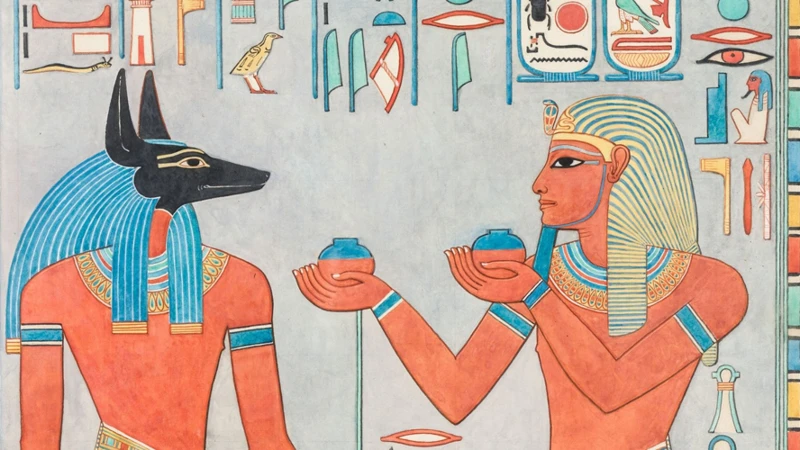
Myths and legends surrounding Anubis contribute to the rich tapestry of ancient Egyptian mythology. One of the most prominent tales involving Anubis is his role in the Osiris myth. According to the myth, after Osiris was slain by his brother Set, Anubis played a crucial part in the resurrection and judgment of Osiris. Anubis embalmed the body of Osiris and helped Isis, Osiris’ wife and sister, in her quest to revive him. This myth solidified Anubis’ position as a guide and protector of the dead, showcasing his connection to the cycles of life, death, and rebirth. Another legend portrays Anubis as a just and impartial judge in the underworld. During the Weighing of the Heart ceremony, Anubis would observe the scales to determine the fate of the deceased’s soul. If the heart balanced against the feather of Ma’at, symbolizing truth and justice, the soul would be allowed to move on to the afterlife. However, if the heart was deemed heavy with wrongdoing, it would be devoured by Ammit, the devourer of souls. The myths surrounding Anubis highlight the complex and multifaceted nature of this enigmatic deity, emphasizing his role as both a guardian and arbiter of the underworld.
Anubis and the Osiris Myth
Anubis’ connection to the Osiris myth is one of the most significant aspects of his role in ancient Egyptian mythology. According to the myth, Osiris, the god of the afterlife, was killed by his brother Set, who coveted his power and authority. After Osiris’ murder, his wife Isis, with the help of her sister Nephthys and Anubis, embarked on a quest to resurrect him. Anubis played a crucial role in the myth by assisting in the embalming and mummification of Osiris, ensuring his proper transition to the afterlife. This act emphasized Anubis’ association with death and the funerary practices of ancient Egypt. Interestingly, the Osiris myth also establishes Anubis as the protector and guide of souls, as he assisted in leading Osiris to his rightful place as the ruler of the underworld. This mythological connection between Anubis and Osiris further solidifies Anubis’ importance in Egyptian religious beliefs and rituals.
Anubis as a Guide and Protector
Anubis not only played a vital role in the judgment and protection of the deceased but also served as a guide and protector for those on their journey to the afterlife. As the guardian of the dead, Anubis ensured that the souls of the departed safely traversed the treacherous pathways of the underworld. His jackal form allowed him to navigate the dark and mysterious realms with ease, guiding souls through the perilous obstacles they encountered. It was believed that Anubis led these souls to the Hall of Ma’at, where their hearts would be weighed against the Feather of Ma’at in a ceremony known as the “Weighing of the Heart.” This ceremony determined the moral worthiness of the deceased and their eligibility for eternal life. Anubis, with his vast knowledge of the underworld and its intricacies, provided guidance and protection during this crucial stage of the afterlife journey. His presence offered reassurance and comfort to the souls, ensuring that they reached their final destination safely. This role as a guide and protector showcases the benevolent aspect of Anubis, who was revered for his unwavering commitment to safeguarding the souls entrusted to his care.
The Comparison to Other Deities
Anubis, the jackal-headed god of ancient Egypt, stands out among the pantheon of deities with his distinctive role and appearance. When comparing Anubis to other Egyptian gods, several interesting contrasts and similarities arise. One of the most prominent comparisons is between Anubis and Osiris, the god of the afterlife and the ruler of the underworld. While Osiris is often seen as the ultimate judge of the deceased, Anubis assumes the role of guardian and guide, leading souls through the perilous journey of the afterlife. This juxtaposition highlights the division of labor and responsibilities within the divine hierarchy. Another deity often associated with Anubis is Thoth, the god of wisdom and writing. Thoth was believed to record the results of the “Weighing of the Heart” ceremony, while Anubis facilitated the actual weighing process. These complementary roles emphasize the collaboration between gods in the intricate processes of the afterlife. It is worth noting that Anubis’ association with death and mummification also sets him apart from gods like Ra, the sun god, who symbolizes life and creation. Anubis’ role in the funerary traditions and rituals further solidifies his unique position within the Egyptian pantheon, showcasing how each god played a specific and vital role in the intricate tapestry of ancient Egyptian beliefs. To learn more about the fascinating deities in different mythologies, check out the story of Nuwa, the creator goddess in Chinese mythology, for a cross-cultural comparison.
Anubis in Modern Culture
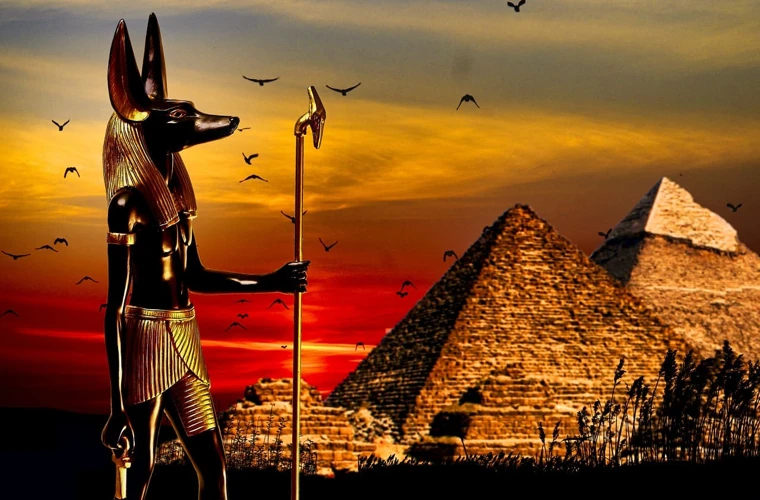
Anubis, the ancient Egyptian god of death and the afterlife, continues to have a significant presence in modern culture. His striking image and association with mystery and the supernatural have made him a popular subject in art, literature, and film. In visual arts, Anubis is often depicted in various forms, ranging from ancient Egyptian-inspired sculptures and paintings to contemporary interpretations in pop art and tattoo designs. His unmistakable jackal-headed appearance has become a symbol associated with the occult and gothic subcultures. Additionally, Anubis has found his way into popular literature, with numerous books and novels featuring him as a central character or incorporating elements of his mythology into their stories. In film, his enigmatic nature and connection to death have made him a captivating character, often portrayed as a guide or guardian in supernatural or otherworldly settings. His presence and symbolism can also be found in the realm of spirituality and New Age practices. Anubis’ role as a guide to the afterlife and his association with death and rebirth resonate with those interested in exploring metaphysical concepts. Anubis’s influence in modern culture is a testament to the enduring fascination with ancient Egyptian mythology and the mystique surrounding this enigmatic deity.
Depictions in Art, Literature, and Film
Depictions of Anubis in art, literature, and film have captivated audiences throughout history. In ancient Egyptian art, Anubis is often depicted either as a jackal-headed human or as a full jackal. These representations showcase his association with death and his role as the guardian of the underworld. In literature, Anubis frequently appears in the context of ancient Egyptian mythology and its rich pantheon of gods. His presence can be found in stories such as “The Book of the Dead” and the tale of Osiris’ resurrection. Anubis also makes appearances in contemporary works of fiction, where his mysterious and intimidating presence adds an aura of intrigue to the narratives. In film, Anubis has been featured in various cinematic productions, bringing his dark and enigmatic aura to life on the big screen. Some notable examples include his appearances in movies like “The Mummy” series and “Stargate.” These portrayals often emphasize Anubis’ power and otherworldly nature, showcasing him as a formidable and awe-inspiring character. Through these artistic mediums, Anubis continues to intrigue and engage audiences, further perpetuating the enduring legacy of this ancient Egyptian deity.
Influence on Occult and New Age Practices
Anubis, the ancient Egyptian god associated with death and the afterlife, has exerted a significant influence on occult and New Age practices. In these esoteric belief systems, Anubis is often revered as a powerful guide and protector during spiritual journeys and astral travel. His association with death and transformation aligns with the concepts of personal growth, rebirth, and transcendence commonly found in these practices. Many tarot decks and oracle cards feature Anubis as a symbol of initiation and transition, emphasizing the transformative power of his energy. Additionally, Anubis’ imagery and symbolism are often incorporated into rituals, meditations, and visualizations performed by practitioners seeking guidance and protection in their spiritual pursuits. As the fascination with ancient Egyptian spirituality and mysticism continues to grow, Anubis remains a prominent figure in the realm of occult and New Age practices, bridging the gap between the ancient past and modern spiritual exploration. The enduring allure of Anubis in these practices is a testament to the enduring power and enigmatic nature of this ancient Egyptian deity.
Decoding the Symbolism of Anubis

Decoding the symbolism of Anubis offers insight into the deeper meanings associated with this intriguing deity. One of the most prominent symbols connected to Anubis is his jackal-headed form. The choice of a jackal, an animal often associated with scavenging and death, conveys Anubis’ role as the guardian of the dead. The jackal, known for its keen sense of smell, was believed to have the ability to locate graves and guide souls to the afterlife. This attribute reinforces Anubis’ role as a protector and guide for the deceased. Additionally, the black coloring of the jackal, often associated with darkness and the night, further emphasizes the connection to death and the underworld. Another important symbol related to Anubis is the weighing scales, known as the “weighing of the heart” ceremony. In this ritual, the heart of the deceased is weighed against the feather of Maat, the goddess of truth and justice. If the heart is lighter than the feather, it signifies a life free of wrongdoing, allowing the soul to proceed to the afterlife. This symbolism represents Anubis’ role as the judge of the dead, ensuring that only those who lived virtuous lives are granted eternal rest. The significance of Anubis stretches beyond death and the afterlife, as he is also revered as a protective deity. His association with safeguarding tombs and guiding souls through the perilous journey reinforces his role as a guardian. The symbolism of Anubis encompasses death, rebirth, and protection, shedding light on the ancient Egyptians’ beliefs about the cycle of life and the importance of upholding moral principles. As we delve deeper into these symbols, we gain a better understanding of the psychological and spiritual aspects surrounding Anubis and the profound impact he had on ancient Egyptian society.
The Jackal-headed God and its Symbolic Meaning
Anubis, the jackal-headed god, holds deep symbolic meaning within ancient Egyptian mythology. The jackal, known for its nocturnal nature and scavenging habits, was associated with death and the afterlife in Egyptian culture. The choice of a jackal as the animal form for Anubis reflects the belief that his role as the guardian of the dead required him to navigate the realms of the living and the deceased. The jackal’s keen sense of smell and ability to locate carrion further emphasized Anubis’ connection to the preservation and embalming of bodies. This symbolism also alludes to Anubis’ role in guiding the souls of the deceased through the treacherous journey of the afterlife. The jackal-headed depiction of Anubis not only adds to his enigmatic aura but serves as a visual representation of his multifaceted responsibilities and connection to the realm of death and rebirth.
Associations with Death, Rebirth, and Protection
Anubis, the jackal-headed god, is closely associated with death, rebirth, and protection in ancient Egyptian mythology. His unique role in guiding souls to the afterlife and his involvement in the embalming process solidify his connection to the realm of death. Egyptians believed that Anubis played a crucial role in the journey of the deceased, ensuring that their souls safely reached the afterlife. As the guardian of the dead, Anubis was responsible for weighing the hearts of the deceased during the “Weighing of the Heart” ceremony, a judgment process where the heart of the deceased was weighed against the feather of Ma’at, the goddess of truth and justice. If the heart was balanced with the feather, it symbolized a righteous life lived, and the soul could proceed to the afterlife. Anubis’ presence during this ceremony highlights his role as a protector and mediator between the living and the dead. Anubis is often depicted as a guide to the souls, leading them through the treacherous paths of the underworld. His jackal form, known for its keen senses and ability to navigate through darkness, represents his protective nature. This association with protection is further emphasized by the fact that Anubis was believed to ward off evil spirits and guard the tombs and burial sites of the deceased. Today, Anubis continues to be revered for his association with death, rebirth, and protection, symbolizing the eternal cycle of life and the mysteries that lie beyond the mortal realm.
Anubis: Mystery and Intrigue
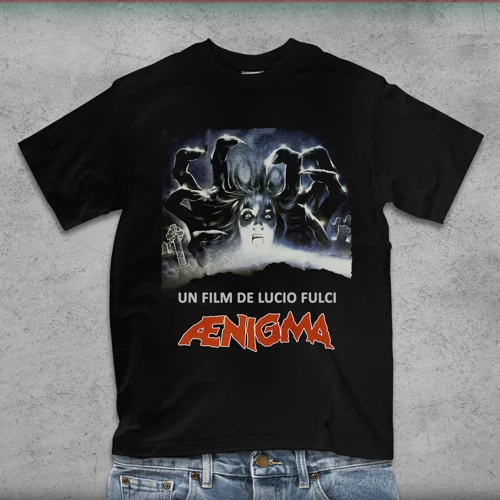
Anubis, the mysterious and intriguing god of ancient Egypt, continues to captivate our imagination due to the enigmatic attributes associated with him. As the guardian of the dead, Anubis held an essential role in the afterlife and funerary practices of ancient Egyptians. One of the most intriguing aspects of Anubis is his involvement in the weighing of the heart ceremony, also known as the judgment of the dead. The ceremony took place in the Hall of Maat, where the heart of the deceased was weighed against the feather of Maat, the goddess of truth and justice. If the heart was found to be lighter than the feather, the deceased would be granted eternal life. However, if the heart was heavier, it was believed that the soul would be devoured by Ammit, a fearsome creature with the head of a crocodile, the torso of a lion, and the hindquarters of a hippopotamus, symbolizing a complete annihilation of the soul. This intricate process emphasizes the importance of balance, morality, and righteousness in the journey to the afterlife. Anubis’s connection to the afterlife is not only limited to the weighing of the heart ceremony. He also guided and protected the souls of the departed on their perilous journey through the underworld, ensuring their safe passage to the realm of the dead. This association with death and protection further adds to the enigma surrounding Anubis and his role in the ancient Egyptian belief system. The fascination with Anubis extends beyond ancient times and continues to inspire art, literature, and film in modern culture. Depictions of Anubis can be found in ancient Egyptian artifacts, murals, and tomb paintings, showcasing his enduring significance. Additionally, Anubis has influenced occult and New Age practices, where he is believed to possess powers of transformation, guidance, and protection. The symbolism associated with Anubis, such as the jackal-headed god representing his ability to navigate between the worlds of the living and the dead, adds to the air of mystery and intrigue that surrounds him. Despite the passage of centuries, Anubis remains an enigmatic figure, continuing to spark curiosity and exploration into the ancient Egyptian belief system and the realms beyond life and death.
The Continuing Fascination with Anubis
The enigmatic figure of Anubis continues to captivate the minds of people around the world. Despite the passage of millennia, the fascination with Anubis has not waned. His mysterious persona and connection to death and the afterlife contribute to the enduring intrigue surrounding him. Anubis, with his jackal-headed appearance and association with embalming and mummification, has become a popular symbol in various forms of art and literature. Depictions of Anubis can be found in ancient Egyptian artifacts, as well as in modern works of fiction and film. His image has been reimagined and integrated into contemporary culture, serving as a testament to his lasting appeal. Additionally, Anubis’s significance extends beyond the realm of mythology and entertainment. He has also influenced occult practices and the New Age movement, where his associations with death, protection, and rebirth have been embraced and interpreted in various ways. The continuing fascination with Anubis is a testament to the enduring power of ancient Egyptian mythology and the allure of this enigmatic god.
Conclusion
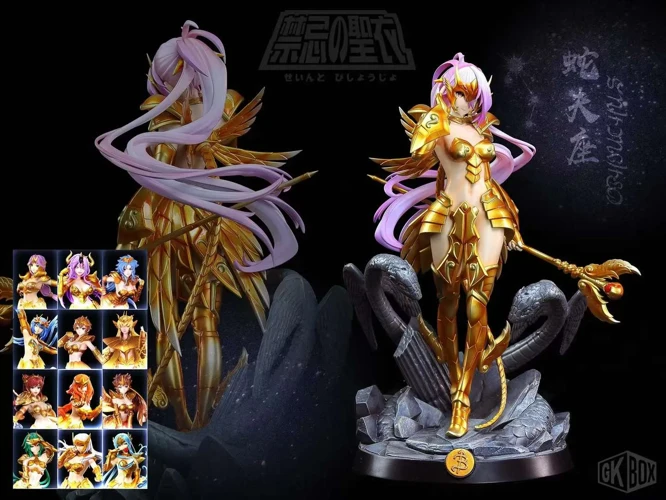
In conclusion, the exploration of Anubis, the enigmatic god of ancient Egypt, reveals a captivating and multifaceted deity. With origins rooted in myth and intricate iconography, Anubis stands as a guardian and guide in the realm of the dead. His association with death, the weighing of the heart ceremony, and the afterlife made him a prominent figure in ancient Egyptian religion and worship. Throughout history, Anubis has continued to captivate the imagination and appears in various forms of art, literature, and even influences occult and New Age practices. The symbolism of Anubis, with his jackal-headed form and connections to death, rebirth, and protection, continues to hold fascination and intrigue. As we decode the mysteries surrounding Anubis, we gain deeper insights into the rich and complex religious beliefs of ancient Egypt. The enduring fascination with Anubis and his place in both ancient and modern cultures only serves to highlight his enduring significance. Explore the fascinating world of Anubis, and you’ll find a deity shrouded in enigma yet ready to reveal the secrets of the afterlife.
Frequently Asked Questions

What is the significance of Anubis in ancient Egyptian mythology?
Anubis played a crucial role in ancient Egyptian mythology as the god of embalming and the afterlife. He was responsible for guiding the souls of the deceased through the perilous journey to the underworld and ensuring their protection throughout the process.
Why is Anubis often depicted with the head of a jackal?
The jackal-headed appearance of Anubis symbolizes his association with death and the rituals of mummification. Jackals were commonly seen in ancient Egyptian cemeteries, scavenging for food and thus became closely associated with the deceased and the afterlife.
What were the main rituals associated with Anubis?
Anubis was involved in various rituals, including the process of embalming and mummification. He also played a significant role in the “Weighing of the Heart” ceremony, where the heart of the deceased was weighed against the feather of Ma’at to determine their worthiness for the afterlife.
Did Anubis have any connections to other Egyptian deities?
Yes, Anubis often collaborated with Osiris, the god of the afterlife, during the process of judgment and mummification. He was also associated with the goddess Bastet, who played a protective role in the afterlife.
Were there any temples dedicated to Anubis?
Yes, several temples were dedicated to the worship of Anubis throughout Egypt. One notable temple was located in ancient Heliopolis, where Anubis was believed to combine his powers with Ra, the sun god.
What is the relationship between Anubis and the weighing of the heart ceremony?
Anubis played a crucial role in the weighing of the heart ceremony. He would oversee the process of weighing the heart of the deceased against the feather of Ma’at, ensuring that justice was upheld and only deserving souls could proceed to the afterlife.
What are some modern cultural references to Anubis?
Anubis continues to be a popular figure in art, literature, and film. He often appears in popular culture as a symbol of death and mystery. In recent years, his imagery and symbolism have also been adopted and modified in occult and New Age practices.
What is the symbolic meaning behind the jackal-headed form of Anubis?
The jackal-headed form of Anubis symbolizes his role as a guardian of the dead and the underworld. Jackals were known for their keen sense of smell and ability to detect decaying bodies, making Anubis an appropriate deity for the rituals of mummification and embalming.
Why is Anubis considered an enigmatic god?
Anubis is considered enigmatic due to the limited information available about his origins and the conflicting myths surrounding his parentage. This air of mystery surrounding Anubis has piqued the curiosity of scholars and individuals interested in ancient Egyptian mythology.
How does Anubis continue to fascinate people today?
Anubis continues to captivate people today with his unique appearance and association with death and the afterlife. His intriguing symbolism and role as a protector of souls have permeated various aspects of modern culture, ensuring his enduring fascination.
References
- 25 Interesting Facts About Anubis, the Egyptian God of Death
- God Anubis
- Anubis: Ancient Egypt’s Mummification Deity | Ask Aladdin
Frequently Asked Questions

1. How did Anubis become associated with death and the afterlife?
According to ancient Egyptian mythology, it is believed that Anubis became associated with death and the afterlife due to his role as the guardian and protector of the deceased. His responsibilities included guiding souls through the perilous journey to the afterlife and weighing the hearts of the deceased in the Weighing of the Heart ceremony.
2. What is the significance of Anubis’ jackal-headed appearance?
The jackal-headed appearance of Anubis holds symbolic meaning. The ancient Egyptians observed jackals scavenging around gravesites, linking them to death and the underworld. By representing Anubis with a jackal head, it emphasized his connection to the realm of the dead and his role as a funerary deity.
3. How did Anubis become associated with embalming and mummification?
Anubis became associated with embalming and mummification due to his close association with the deceased. His role as a guardian of the dead extended to preserving and preparing the bodies for burial. Anubis was believed to oversee the embalming process and ensure the proper preservation of the deceased’s body.
4. Were there any temples dedicated to Anubis?
Yes, there were temples dedicated to Anubis in ancient Egypt. The most notable one was the Temple of Anubis, located in the ancient city of Niwt-Imn (Heliopolis). This temple served as a center for Anubis’ worship and was an important site for funeral rituals and ceremonies.
5. Can Anubis be considered a guide and protector?
Absolutely. Anubis is often depicted as a guide and protector in ancient Egyptian mythology. He guided the souls of the deceased through the perilous journey to the afterlife, ensuring their safe passage. Additionally, his role as a guardian of the dead involved protecting the deceased and their tombs from evil spirits and negative influences.
6. Did Anubis have any siblings or family members?
Yes, Anubis was believed to be the son of Osiris and Nephthys. In some versions of the myth, Nephthys disguised herself as Osiris’ wife, Isis, and became pregnant with Anubis. His family connections further solidify his significance in ancient Egyptian mythology and religious beliefs.
7. How did Anubis become associated with the weighing of the heart ceremony?
The association between Anubis and the weighing of the heart ceremony stems from his role as the guardian of the dead. In this ceremony, the heart of the deceased is weighed against the feather of Ma’at, the goddess of truth and justice. Anubis oversaw this process, ensuring that only those with pure hearts could proceed to the afterlife.
8. How has Anubis influenced modern culture?
Anubis has left a lasting impact on modern culture. His depictions can be observed in various forms of art, literature, and film. Additionally, his symbolism and associations with death, rebirth, and protection have influenced occult and New Age practices, where Anubis is often revered as a deity connected to spiritual transformation.
9. Was Anubis worshipped by people outside of Egypt?
Anubis’ worship primarily centered in ancient Egypt, although neighboring cultures did show interest in him. The ancient Greeks, for example, equated Anubis with their god Hermes, blending their mythologies. It’s fascinating to see how cultural interactions led to the spread and adaptation of Anubis’ significance beyond the borders of Egypt.
10. Why is Anubis still a subject of fascination today?
Anubis continues to captivate people’s imaginations due to the enigmatic and mystical nature surrounding him. His association with death, the afterlife, and the mysterious rituals of ancient Egypt sparks intrigue and fascination. Additionally, his jackal-headed appearance makes him visually distinct and memorable, further adding to his allure.
References
- Egyptian God of Death: Unveiling the Mysteries of Anubis
- Anubis: Ancient Egypt’s Mummification Deity | Ask Aladdin
- Anubis, Egyptian God of the Dead and the Underworld







